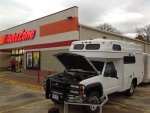Anybody use a 12V 140 Amp Smart Waterproof Dual Battery Isolator unit, to trickle charge a set of house batteries on a off road trailer?
I'm just wanting to charge the set of 110ah MAGM batteries as I'm traveling. Would the charge wire in the 7 pin harness be sufficient for this, or would I have to run a long 4awg/fuse, to the bumper/trailer/bat box?
This is the unit I have already. Yay, nay?

I'm just wanting to charge the set of 110ah MAGM batteries as I'm traveling. Would the charge wire in the 7 pin harness be sufficient for this, or would I have to run a long 4awg/fuse, to the bumper/trailer/bat box?
This is the unit I have already. Yay, nay?


